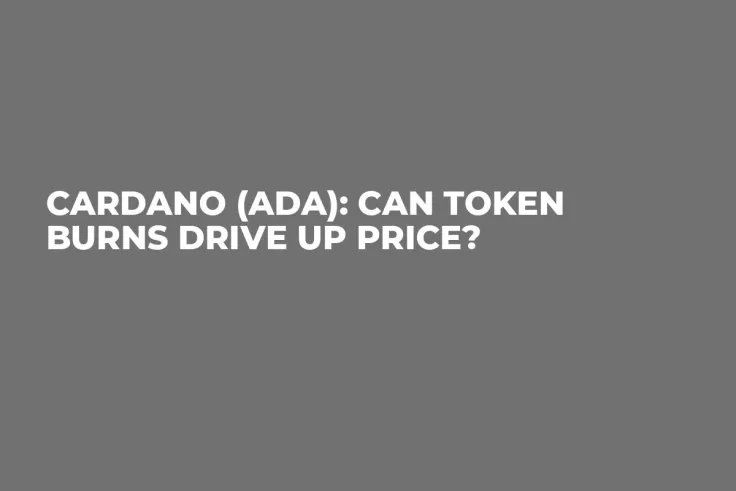
Disclaimer: The opinions expressed by our writers are their own and do not represent the views of U.Today. The financial and market information provided on U.Today is intended for informational purposes only. U.Today is not liable for any financial losses incurred while trading cryptocurrencies. Conduct your own research by contacting financial experts before making any investment decisions. We believe that all content is accurate as of the date of publication, but certain offers mentioned may no longer be available.
The cryptocurrency market is closely monitoring the performance of Cardano (ADA) as the altcoin is considered a strong contender in the upcoming bullish market cycle. Despite being currently below its ATH seen in 2021, Cardano's strong fundamental and active development community indicate the potential for new highs.
One of the key characteristics of Cardano (ADA) is its large total supply of 45 billion coins. This is significantly higher than that of Bitcoin (BTC), which has a maximum supply of 21 million, and has raised concerns among investors regarding the coin's potential for price appreciation. The possibility of token burning has been discussed as a means of addressing this issue, but it remains to be seen if it will have a significant impact on the coin's value.
Token burning is a widely used tactic in certain cryptocurrency projects, where a portion of the outstanding tokens are destroyed in order to potentially drive up the value of the remaining tokens, should demand for the coin remain constant or increase. However, Charles Hoskinson, the founder of Cardano, has been a vocal critic of this approach.
He argues that the practice lacks any real fundamental value to the project and can be used as a tactic to manipulate the price of a token. Additionally, Hoskinson maintains that burning tokens can lead to decreased liquidity and higher market volatility, both of which can negatively impact investors.
As a result, the entrepreneur favors a strategy where the Cardano project places emphasis on advancing its technology and building a robust user base, rather than relying on short-term price manipulation tactics.
Could burn rates benefit ADA price?
Withdrawals of tokens from circulation, as seen in BNB token burns, may have a limited effect on the price of Cardano (ADA). Historically, such actions have been associated with temporary price increases, but over time, the impact of token burning has become less pronounced. It is essential to keep in mind that other factors, such as market demand, competition with other blockchain projects and ongoing development efforts, also play a crucial role in determining the price of a cryptocurrency.
The performance of other altcoins such as Shiba Inu (SHIB) and Terra Classic (LUNC) further emphasizes this point. These tokens have experienced significant price fluctuations in response to major announcements and developments within their respective ecosystems, as well as during periods of increased optimism and speculation on the broader cryptocurrency market. In other words, tangible advancements and investor sentiment carry more weight than token destruction in shaping the price of these cryptocurrencies.
Furthermore, it is worth noting that Cardano (ADA) is currently down 89% from its ATH. While token burning could potentially have a positive impact on the altcoin's price, particularly considering its current market performance, it is unlikely that it would be sufficient to return Cardano to its previous peak value of $3.10.
On the other hand, it is important to note that Hoskinson has emphasized that Cardano's governance model is designed to allow ADA investors to make changes to the protocol, such as adjusting the inflation rate. In the event of a significant decline in issuance rate, and a lack of sufficient transaction volume to generate fees, it is possible for the community to vote on changes to the monetary policy.
However, these are simply hypotheses, and any changes to the monetary policy should be thoroughly discussed and evaluated by the Cardano community before any decisions are made.
 Dan Burgin
Dan Burgin Vladislav Sopov
Vladislav Sopov U.Today Editorial Team
U.Today Editorial Team